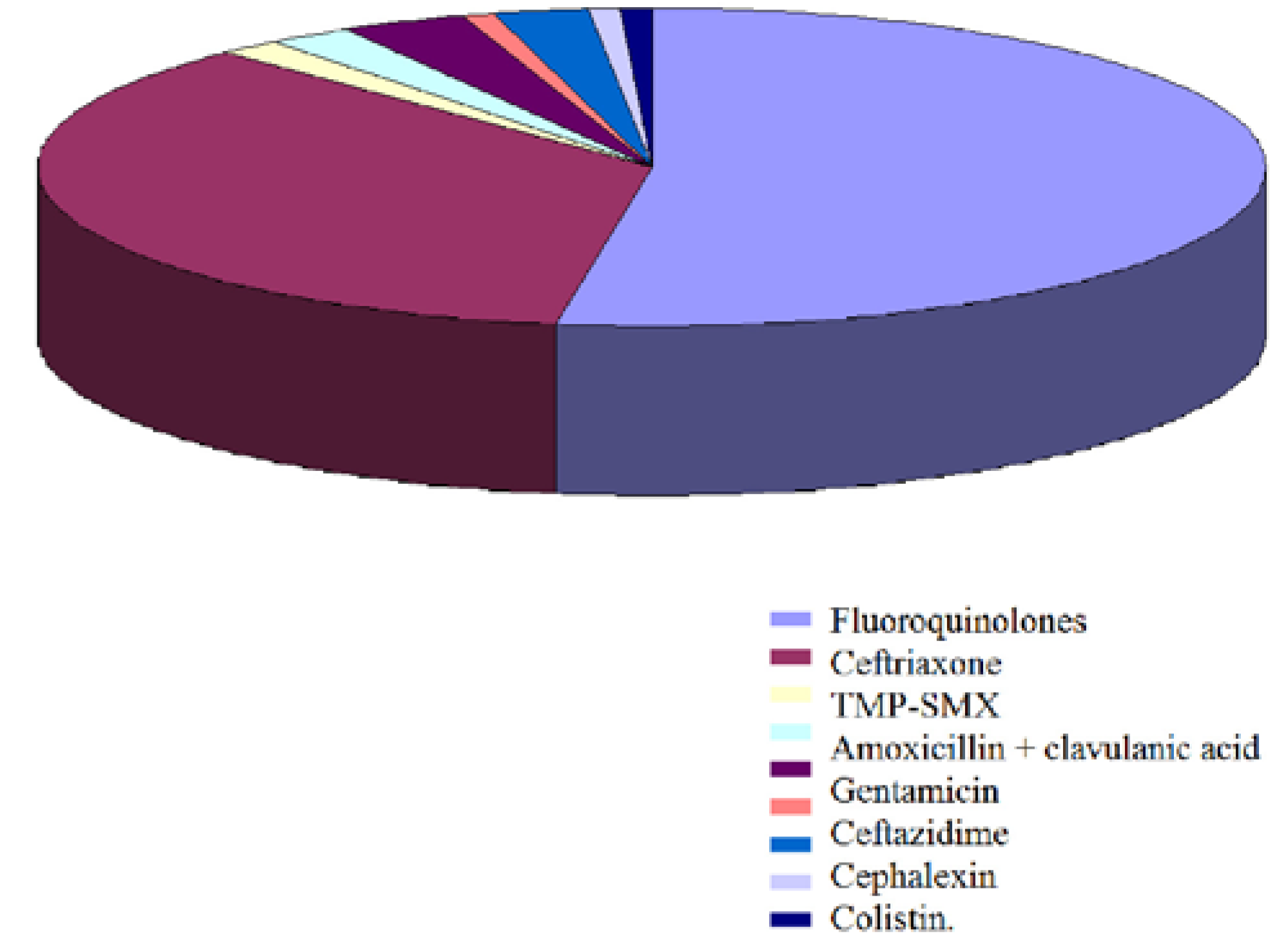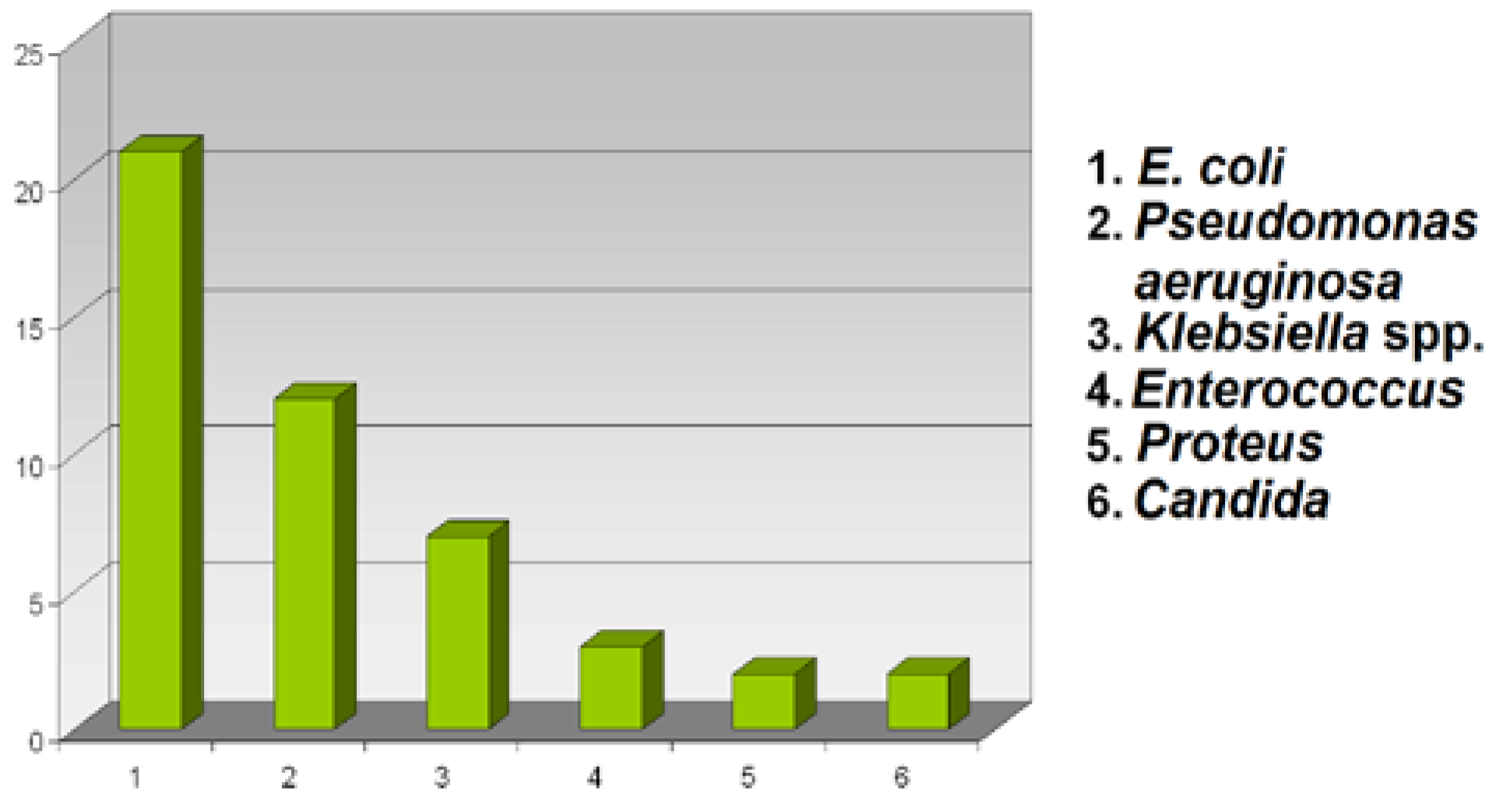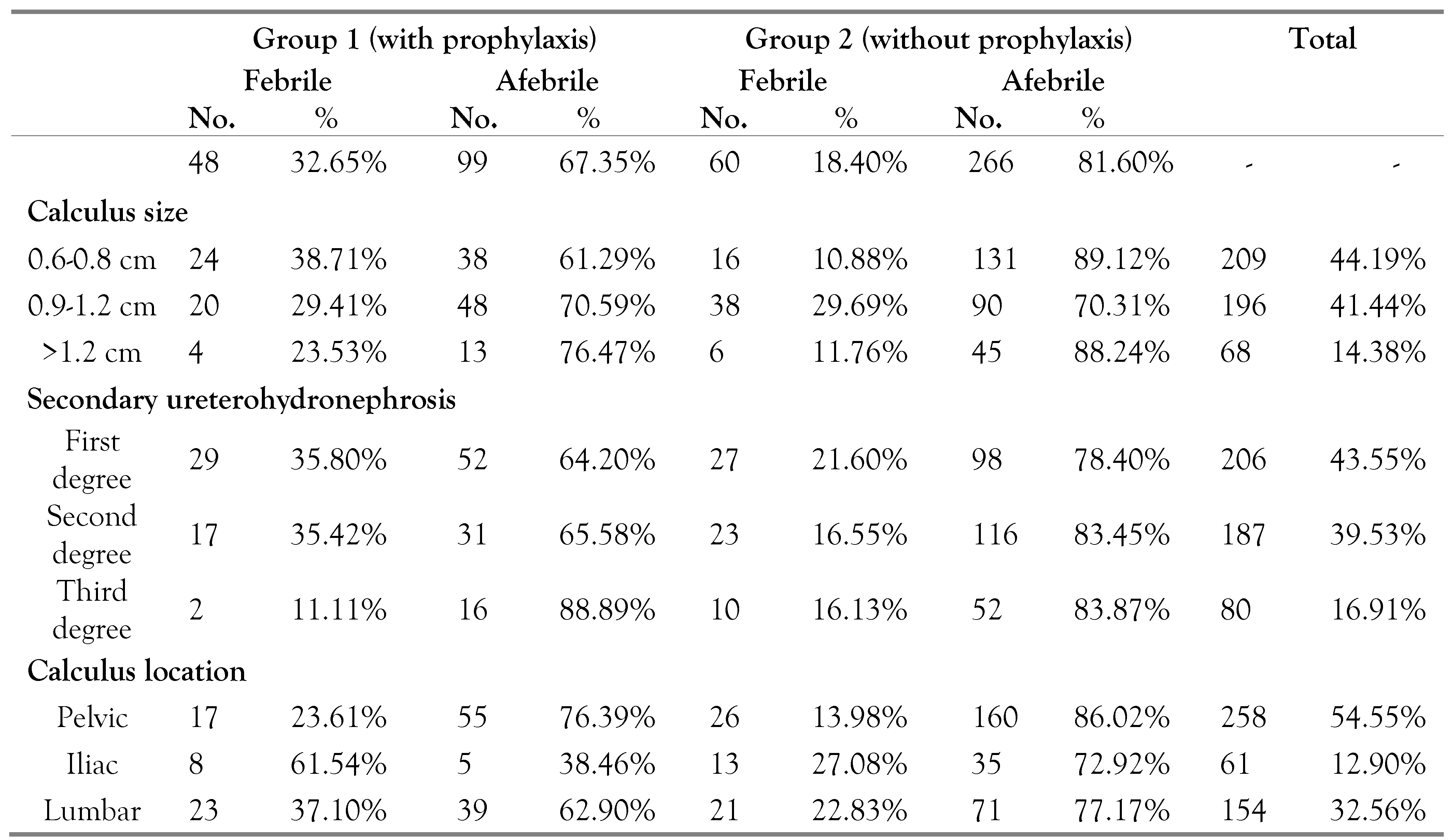Background
Retrograde ureteroscopy is known to be a minimally invasive treatment of ureteral calculi with low morbidity and a success rate of over 90% regardless of calculus location [
1]. Technological advancements in the field have led to changes in ureteroscopy practice guidelines. For example in 1997 for lumbar ureteral stones up to 1 cm the American Urological Association (AUA) recommended extracorporeal shock wave lithotripsy (ESWL) as first line treatment and ureteroscopy as an alternative, compared with ESWL or ureteroscopy for stones on the distal ureter. Ten years later, both AUA and EAU (European Association of Urology) guidelines suggest the superiority of ureteroscopy for all calculi regardless of size or position, except for those on the lumbar ureter with diameters smaller than 1 cm, in which case ESWL should be the first treatment option. The overall stone- free rate is higher after ureteroscopy when compared with ESWL [
2,
3].
One of the common complications of ureteroscopy, reported to occur in up to 25% of cases [
4], is urinary tract infection (UTI). It can lead to urosepsis, which may sometimes be fatal. The rate of bacteremia following ESWL has been reported to be as high as 14% [
5]. Antibiotic prophylaxis may reduce postoperative infections and is recommended for most surgical procedures [
6]. However antibiotic prophylaxis remains controversial when weighting potential side effects against the benefits. Side effects of antibiotics administration range from allergic reactions with minor skin manifestations to anaphylactic shock. Saprophytic flora destruction leads to fungal infections or
Clostridium difficile colitis associated with treatment with clindamycin, third generation cephalosporins, penicillins, and more recently with fluoroquinolones. Abuse and misuse of antibiotics are partly responsible for the increase in antibiotic resistance worldwide. Thus the incidence of methicillin-resistant
Staphylococcus aureus (MRSA) is now higher than 55% in US hospitals [
6] while in Europe bloodstream infection with MRSA is a significant and widespread problem, with the resistant strain accounting for over 25% of
S aureus bacteremias in many central and southern European countries [
7]. A recent study revealed
E coli resistance of up to 25% to fluoroquinolones and up to 30% to trimethoprim-sulfamethoxazole [
8]. Therefore some dilemmas appear regarding risk groups that would benefit from prophylaxis, type of antibiotic and treatment duration.
While 2013 EAU guidelines quoting Grabe et al. [
8] are not straightforward suggesting a level of evidence 4, the 2012 revision of the 2008 AUA guidelines recommend antibiotic prophylaxis in all patients who undergo ureteroscopy: fluoroquinolones or trimethoprim- sulfamethoxazole should be used as first intention for at least 24 hours before the intervention or, as second option, first or second generation cephalosporins, aminoglycosides or amoxicillin with clavulanic acid [
9]. Antibiotic prophylaxis in ureteroscopic stone removal is supported by a randomized trial by Knopf et al. in which prophylactic levofloxacin administration significantly reduced postoperative UTIs in healthy population with uninfected preoperative urine and ureteral stones [
10].
We performed a study to determine the influence of preoperative prophylaxis in reducing the incidence of post-ureteroscopy fever and its impact in terms of the period of hospitalization. We also tried to identify the influence of certain features of the ureteral stones, such as size, location and overlying distension on the incidence of infectious complications.
Methods
We included all patients who underwent retrograde ureteroscopy for ureteric stones in the Iași and Tg Mureș Urology Clinics from 2009 to 2012. Exclusion criteria were: history of previous ureteral double J stent or nephrostomy, preoperative febrile syndrome, and need for concomitant percutaneous nephrolithotomy. Ureteroscopy was not performed in full feverish spurt. All diabetic patients were metabolically compensated before the procedure.
All patients received intra and postoperative antibiotic treatment according to local guidelines and we aimed to check for any added benefit when antibiotics were also administered as preoperative prophylaxis.
For this study, we defined infectious complications according to SIRS (systemic inflammatory response syndrome) criteria: fever, at least one episode above 38°C, followed by leukocytosis >12000/cmm or <4000/cmm, tachycardia >90 bpm, tachypnea >20/min). Occurrence of fever was the main outcome of interest.
We grouped patients according to location and size of the stone and overlying distension, comparing the frequency of fever between the two groups of patients – with and without antibiotic prophylaxis. We also calculated the incidence of positive urine cultures in patients who presented fever, and we identified the responsible germ.
Data were statistically analyzed using the EpiInfo 7 software (Chi-square test). Indicative of a statistically significant difference was a p value <0.05.
Results
Descriptive Data
The study group included 473 patients, with a higher proportion of women (male to female ratio: 1/1.72). Subject enrolment and gender distribution over the course of the study are presented in
Table 1. Patient age ranged from 17 to 82 years with a mean age of 46.35±15.76.
We recorded fever in a total of 108 cases in both groups, accounting for 22.83% of all subjects in the study. In 209 (44.19%) cases the stone size was between 0.6 and 0.8 cm, in 196 (41.44%) cases between 0.9 and 1.2 cm, and in 68 (14.38%) cases above 1.2 cm (
Figure 1).
We found 206 (43.55%) patients with first degree ureterohydronephrosis (UHN), 187 (39.53%) with second degree UHN and 80 (16.91%) with third degree UHN.
In 258 cases (54.55%) calculi were located in the pelvic ureter, in 61 (12.90%) cases on the iliac ureter and in 154 (32.56%) cases on the lumbar ureter (
Table 2).
Subgroup Analysis
Patients were divided into two groups based on the presence (Group 1) or absence (Group 2) of antibiotic prophylaxis for at least 24 hours before surgery. Group 1 (147 patients, mean age: 45.5±18.3) received antibiotic prophylaxis mainly with fluoroquinolones (ciprofloxacin and levofloxacin, 52.45% of cases) or third generation cephalosporins (40.16%) (
Figure 2). Group 2 (326 patients, mean age: 46.7±15.0) did not receive antibiotic prophylaxis.
In Group 1, of the 147 patients who received antibiotic prophylaxis, 48 (32.65%) were febrile, compared with Group 2, without antibiotic prophylaxis, where we recorded febrile syndrome in 60 (18.40%) cases, p=0.0009, Chi-square=10.87 (
Figure 3).
Comparing the two groups based on calculus size, for stones with diameters of 0.6-0.8 cm 38.71% of patients were febrile in Group 1, compared with 10.88% in Group 2 (p=0.0008).
Within Group 2 (patients who did not receive antibiotic prophylaxis) we found that calculi of 0.9-1.2 cm associated a higher risk of fever: 29.69% compared with 10.88% at diameters of 0.6-0.8 cm (p=0.0001, Chi- square=14.16) and 11.76% at diameters above 1.2 cm (p=0.02, Chi-square=5.389).
Secondary ureterohydronephrosis did not statistically influence (using the Chi-square test) the frequency of fever in any of the studied groups.
Comparing the two groups based on stone location, we found that in patients with iliac ureter calculi, prophylaxis did not prevent infectious complications: 61.54% of those with antibiotic prophylaxis were febrile compared with 27.08% without antibiotic prophylaxis (p=0.04).
A secondary analysis showed that, compared with patients with iliac ureteral calculi, cases with stones located in the pelvic ureter had better prognosis with or without antibiotic prophylaxis. In Group 1, patients with pelvic ureter calculi presented fever in 23.61% of cases, compared with 61.54% febrile patients with iliac ureteral calculi (p=0.01, Chi-square=5.91). In Group 2, 13.98% of those with pelvic ureter calculi were febrile compared with 27.08% of patients with iliac ureteral calculi (p=0.05, Chi-square=3.821).
We report data on postoperative urine cultures in febrile patients (n=108) – positive in 47 cases (43.52%). The most commonly involved bacteria were:
E coli (21 urine cultures; 44.68%), followed by
P aeruginosa (12 urine cultures; 25.53%),
Klebsiella,
Enterococcus, Proteus and
Candida spp (
Figure 4).
The average treatment period was 7.04 days (calculated until remission of symptoms of infection or until the first negative urine culture). Patients infected with Pseudomonas or Klebsiella spp had a treatment period of 11.83 days and 8.33 days respectively. The longest treatment period was recorded in patients with Candida infection, on average 14.5 days.
Infectious complications involved additional costs and prolonged hospitalization. In our case the average length of hospital stay was 2.1 days in Group 1, compared with the 5.1 days in Group 2; the hospitalization period varied between 2 and 18 days.
Discussion
Retrograde ureteroscopy as a method of treatment for ureteral calculi can lead to infectious complications, according to Grabe M [
4], in a proportion of up to 25% of cases. Their occurrence can be related to patient personal history, neglected asymptomatic bacteriuria, time of surgery and surgical technique. During ureteroscopy the hydrostatic pressure can cause bacterial or endotoxin translocation into the systemic circulation. Therefore, pressure must be maintained at a sufficiently low level, enough to ensure adequate visibility [
4]. To achieve this goal, Johnson et al. [
11] recommend the use of ureteral access sheaths, or a periodical or intermittent bladder drainage with an angiography catheter or with a small-caliber probe. There are also operator independent factors, as in the endoscopic maneuvers some germs can be mobilized in the upper urinary tract and sepsis may also occur when handling potentially infected stones. The EAU 2013 guidelines mention that before an intervention for lithiasis all patients should have investigations to detect urinary infection. In uncomplicated cases a urinalysis may be sufficient, but in other cases a preoperative urine culture may be necessary. However 1% of cases of post-ureteroscopy sepsis have negative urine culture [
5].
Postoperative fever as a sign of urinary infection has a relatively low incidence. It is not always caused by an infectious agent; for example, it can be caused by chemically-induced aseptic kidney inflammation. However fever remains the most common postoperative complication [
10]. Geavlete et al., in a group of 2735 cases of semi- rigid ureteroscopy, recorded an incidence of fever in 1.13% of cases; other authors have obtained incidences of up to 6.9% [
1].
While in patients with symptomatic UTI there is no doubt regarding the need for antibiotic treatment for at least 3 days before the endourologic intervention, according to some authors, in those without UTI dilemma still exists in Europe. In the United States the 2012 AUA guidelines [
9] recommend antibiotic prophylaxis in all patients scheduled for an endourologic intervention. In cases undergoing ureteroscopy for ureteric stones Preminger et al. [
5] recommend antibiotic prophylaxis regardless of the urine culture outcome.
We remind the relation between germs and stones. Urease secreting bacteria such as
Proteus,
Klebsiella,
Pseudomonas,
Ureaplasma urealyticum, etc., make the urine alkaline (pH 7.2) and in this situation phosphate precipitation occurs, leading to ammonium-magnesium phosphate. Once the calculus is formed, bacteria adhere to its surface, invading the interstitium and becoming part of the calculus. The continued sedimentation of new crystals on the surface of the stone will form a coating that will turn the calculus into a bacteria germ reservoir. This coating protects the bacteria from the action of antibiotics [
12]. For this reason, we have to consider all patients with urinary stones infected until proven otherwise.
For exploratory ureteroscopy or for the treatment of tumors the indication for antibiotic prophylaxis is relatively controversial. Antibiotic prophylaxis in these situations, although the risk of sepsis is relative, prevails in terms of potential benefit [
12]. There are no clear recommendations regarding antibiotic choice because in Europe there are differences in the spectrum of sensitivity to antibiotics. The choice of antibiotic for prophylaxis should take into account the effectiveness, tolerability and the cost. The spectrum must be large enough to cover normal and pathogenic flora. In patients with prolonged hospitalization we should be aware of the hospital flora and have in mind the risk of potential infection, the target organ and the role of local inflammation [
4,
13,
14]. For the genitourinary tract, fluoroquinolones, cephalosporins and aminoglycosides have been recommended for antibiotic prophylaxis because of their prolonged half-life, relatively broad spectrum of action, minimal side effects and low price [
9,
15]. However, the risk of nephrotoxicity associated with aminoglycosides limits their use when other active agents are available. Both fluoroquinolones and cephalosporins have proven useful in antibiotic prophylaxis [
10,
16] without apparent differences in efficacy between these two antibiotic classes [
6].
Although in our centers there is no standard policy regarding the choice of antibiotic, there are hospitals where antibiotics used for prophylaxis are changed periodically according to the local sensitivity spectrum. For example in the urology clinic of the University of Michigan, USA, fluoroquinolones were used until 2008 when they were replaced with trimethoprim- sulfamethoxazole and since 2011 cefazolin is used [
6]. There is no longer a recommendation for antibiotic prophylaxis in patients with genitourinary interventions just to prevent bacterial endocarditis [
17].
In our study the majority of patients were female; the data are contradictory with those in the literature indicating mainly men, but they fit in terms of age. The incidence of fever in our study, respectively 22.83%, was much higher than the one revealed by Anagnostou et al. [
2] and slightly smaller than that revealed by Grabe [
4]. Paradoxically, if we refer to studies by Knopf [
10] and Ramaswamy [
18] we notice that the incidence of febrile syndrome was higher in patients who received antibiotic prophylaxis, possibly due to an imbalance of the urinary flora associated with antibiotic administration, or to a non-specific cause of fever.
Although in our study we found positive urine cultures in 43.52% of cases, remember that Mariappan [
19] revealed that urinalysis is not a sensitive predictor of infectious complications in patients with endourologic maneuvers for urinary stones.
Febrile syndrome prolongs hospitalization after ureteroscopy (2.1 vs. 5.1 days). Prolonged hospitalization is in itself a risk factor for nosocomial infections and it involves higher costs. In the USA costs related to surgery due to infections reach 10 billion dollars annually [
6].
Conclusions
Although ureteroscopy is considered a relatively safe procedure, in our study we found a high percentage of fever (22.83%), considered indicative of infectious complication. Our results highlight patients with pelvic ureteral calculi as having good prognosis in terms of infectious complications regardless of antibiotic prophylaxis. Patients with calculi between 0.9 and 1.2 cm in size could be considered at high risk to develop febrile syndrome.
Less than half of all febrile patients had positive urine cultures which makes us wonder if we cannot incriminate other noninfectious factors (aseptic kidney inflammation) [
6]. This study did not prove the efficiency of preoperative antibiotic prophylaxis; however, based on the clinical experience of the past 120 years [
4], infectious complications are known to be associated with urological maneuvers and prophylaxis could be indicated. Before performing ureteroscopy we should preferably obtain negative urine cultures as the EAU guideline recommends. In case of active infection, the maneuver should be postponed and patients should receive antibiotics according to sensitivity testing for at least 3 days prior to surgery. Future studies on larger numbers of patients are needed to identify risk groups depending on the location of the calculi and secondary ureterohydronephrosis.









